ASUS ROG STRIX RTX 2060 OC Gaming Review
Rakesh Sharma
Jan 30, 2019 5292
ASUS ROG STRIX RTX 2060 OC Gaming Review
ASUS ROG STRIX RTX 2060 OC Gaming Review
During CES 2019, Nvidia officially announced the RTX 2060 graphics card, a mid-range Turing-based GPU announced to be 60 percent faster than the older GTX 1060 in current gaming titles. Same time ASUS also unveiled its RTX 2060 product line. Earlier ASUS India has given us the opportunity to have a hands-on experience and tests the ASUS ROG STRIX RTX 2070 OC Gaming graphics card. Review is
here.
And today, we are reviewing ASUS’s Republic of Gamers (ROG) STRIX variants of the RTX 2060, with faster GDDR6 memory, real-time ray tracing capabilities, triple fan cooling solution and a custom PCB design, the ASUS ROG STRIX RTX 2060 6G Gaming card.
Nvidia’s official reference RTX 2060 comes with 240 Tensor Cores, 1920 CUDA cores, a 1365MHz/1680MHz base/boost clock speed and 6GB of GDDR6 RAM running at 14Gbps. The RTX 2060 is rated for 37 RTX-OPS.
Now let’s see what ASUS ROG STRIX RTX 2060 6G Gaming card is packed with.
Features
- NVIDIA TURING™: ROG GeForce RTX™ graphics cards are powered by the Turing™ GPU architecture and the all-new RTX platform. This gives you up to 6X the performance of previous-generation graphics cards and brings the power of real-time ray tracing and AI to games.
- DirectX 12: Power new visual effects and rendering techniques for more lifelike gaming.
- NVIDIA Shadowplay™ Record and share high-quality gameplay videos, screenshots, and livestreams with your friends.
- Patented Wing-blade Fans deliver high air pressure, reduced noise levels, IP5X certified dust resistance, and 0dB mode for silent gaming.
 *
* - MaxContact Technology allows 2X more contact with the GPU chip for improved thermal transfer.
- Auto-Extreme Technology uses automation to enhance reliability.
- Super Alloy Power II includes premium alloy chokes, solid polymer capacitors, and an array of high-current power stages to fuel Turing™’s cores.
- ASUS FanConnect II equips 2 hybrid-controlled fan headers for optimal system cooling.
- GPU Tweak II provides intuitive performance tweaking and thermal controls.
Specifications
Package
The STRIX RTX 2060 comes in a box securely packaged with actual product picture and STRIX graphics and features highlights on front and the back of the box.
Inside the box
Along with the GFX card box also includes Software installation CD, quick start guide and two ROG Velcro cable tie straps.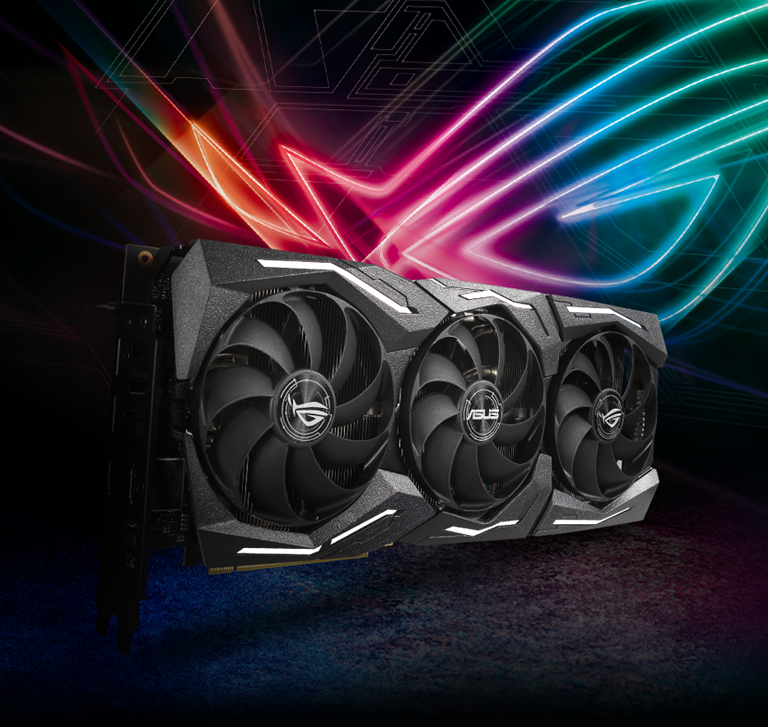
Looks
Card is having great looks with complete black theme. In front we have a big triple fan cooling with patented wing-blade fans mounted on to the new maxcontact technology heatsink.
Back of the card have a thick back-plate with complete coverage of the PCB. Beside etched graphics backplate also have a large ‘Republic of Gamers’ logo with RGB lighting which can be fully customized.
Due to the thick cooling solution card is a 2.5 slot design, but you will need 3 standard slots available to accommodate the card inside your PC.
This Strix card features 8-pin and 6-pin PCI-E power connectors, which along with the PCI-E lane’s power provides this card with a total of 375w of power.
At the rear of the card we have lot of connectivity options consisting of 2 X DisplayPort 1.4 connections and 2 X HDMI 2.0 ports.
On the case inside end of the card we can see the new Asus Fanconnect II headers – a unique feature allowing you to connect two 4-pin CPU / GPU PWM-controlled fans instead of plugging them into your motherboard.
Inside
Removing the heatsink reveals all nickel plated cooling solution with six copper pipe fused onto a big copper base which is finely milled to give the GPU silicon perfect flat contact with the heatsink. Whole PCB is given rigidity with strong aluminum frame.
Closer look
NVIDIA’s TU106Turing architecture graphics processor made on a 12 nm process with 10.8 billion transistors packed in a 445mm2 die.
Card comes with six Micron GDDR6 memory chips 8QA77D9WCW, making it total of 6GB V-memory running at 1750 MHz (14 Gbps GDDR6 effective)
Card have 8+2 phase VRM power configuration. Where 8 phase VCore is powered by Texas Instruments CSD95481RWJ60A Synchronous Buck NexFETâ„¢ Smart Power Stages and 2 phase memory VRM uses IR TDA21483 Power module with integrated MOSFETs and driverchip, all controlled by uPcontroller uP9512Q .
For Asus FanconnectII implementationiTE 8915FN-56 chip is used in this card.
For Aura RGB lighting ASUS uses Monolithic Power Systems (MPS) MP2888A multi phase PWM controller chip.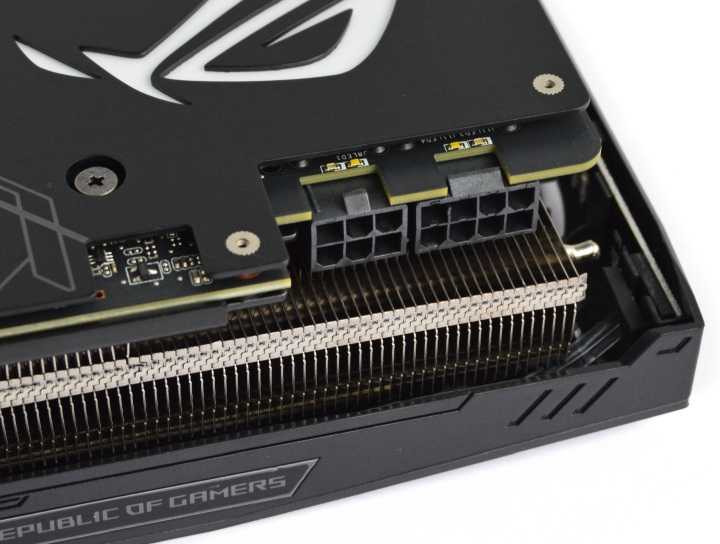
All the Current & Power Monitors and Regulations are managed ON SemiconductorNCP45491Current Monitor chips
Testing
Test system configuration —
| CPU | Intel Core i5 9600K |
| Board | MSI Z390-GAMING EDGE AC |
| RAM | 2 X 8GB Corsair DDR4 3600Mhz |
| SSD | Corsair Force 240 SSD |
| Cooler | Corsair h215i RGB PLATINUM |
| Case | MSI MPG GUNGNIR 100 |
| GFX | ASUS ROG STRIX RTX 2060 6G |
| PSU | Cooler Master V750 |
| Display | Asus PB287Q |
| OS | Windows 10 |
Software
Benchmarks
Temperatures
Room Temperature: 26C
In idle, the temperature is real good and at full load running 3D Mark Time Spy temperature was ok and fans were not loud at all.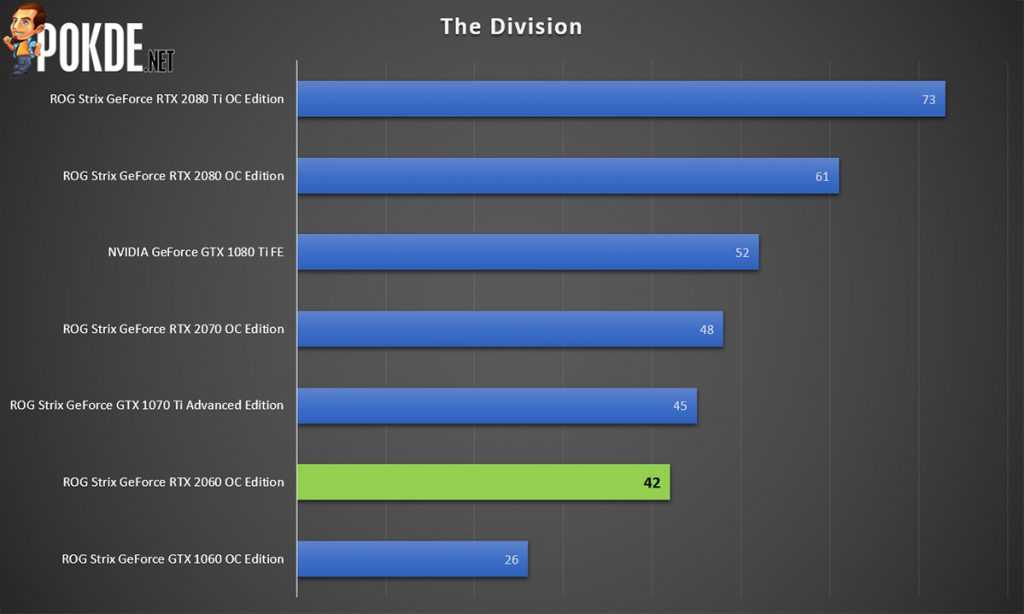
Power Consumption
Wattage reading as per displayed by APC Pro 1000VA (Model no. BR1000G-IN) UPS.
Pros
- Nice 144p Performance
- Fan turns off on idle
- Nice looks
- Very quiet
- Excellent build quality
- Back plate
- RGB lighting
- Extra fan connectors
Cons
- NIL
Conclusion
Being a ROG family product, the ASUS ROG STRIX RTX 2060 6G OC Gaming graphics card carries all the topnotch build quality and cooling performance, same as all ROG STRIX graphics card have and at a price tag of Rs.52K(approx) the ASUS ROG STRIX RTX 2060 6G OC Gaming graphics card is one of the best custom RTX 2060 graphics card out there offering great 1440p performance in current gaming titles. But by just raising the budget by Rs.8-10K one can get the ROG STRIX RTX 2070 with full 8GB of GDDR6 memory.
Finally if you are tight in budget and just want to get a Nvidia RTX card, the ASUS ROG STRIX RTX 2060 6G OC Gaming graphics card is our choice for a low price RTX card and worthy of our PC TeK Reviews CHOICE Award.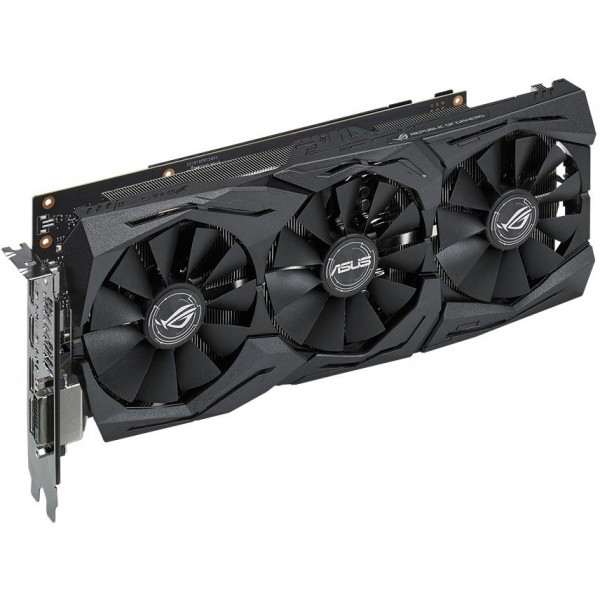
Manufacturers Info
Site Link
Thanks.
Asus GeForce RTX 2060 ROG Strix OC Review
Manufacturer: Asus
UK price (as reviewed): MSRP £455 (inc. VAT)
US price (as reviewed): MSRP TBC
For a long time now, Asus’ focus when it comes to GPU has been the ROG Strix brand. In many ways this is understandable; it’s the company’s crème de la crème, a card traditionally packed with features and unashamedly priced that little bit higher than competing flagship parts. When paired with GPUs that are themselves top-tier, this strategy makes sense, but repeatedly we’ve taken issue with Strix cards that use mid-tier GPUs, because the price premium Asus believes they command often puts them at odds with baselines models of the next GPU up the stack. Unfortunately, the RTX 2060 ROG Strix OC has a UK MSRP of £455, and we’ve seen it on sale for as high as £470. That’s at least £125 more expensive (38 percent!) than the already-decent Founders Edition card, and worse still it’s right in line with entry-level RTX 2070 SKUs. Can any card possibly justify such an investment? Let’s find out.
That’s at least £125 more expensive (38 percent!) than the already-decent Founders Edition card, and worse still it’s right in line with entry-level RTX 2070 SKUs. Can any card possibly justify such an investment? Let’s find out.
As ever, the Strix card comes with a very beefy cooler, with this specific card measuring 300mm long, 132mm tall, and requiring three expansion slots from your motherboard thanks to its roughly 2.5-slot design. Asus uses this cooler design on GPUs as demanding as Vega 64 and GTX 1080 Ti, so we’re expecting some excellent temperatures given that the RTX 2060 is a 160W GPU at stock frequencies. Build quality is very good, although we’d still prefer Asus to switch to a metal cooler shroud instead of plastic. The metal backplate, meanwhile, very much adds to the card’s robustness.
Asus has raised the boost clock by 150MHz (nine percent) to 1,830MHz. Exact specs of all custom RTX 2060 parts are still TBC, but from what we’ve seen so far this is the joint highest boost clock, with Palit, EVGA, and Gigabyte all seeming to have cards that match this.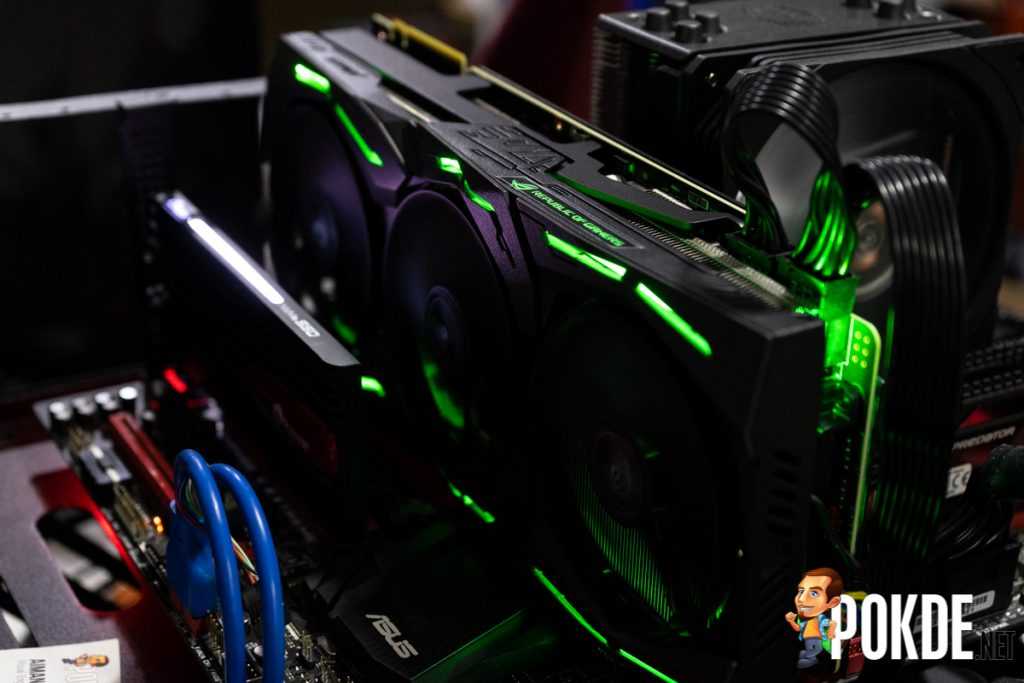 That said, Asus’ GPU Tweak II software will allow you to switch the card into OC Mode, which adds 30MHz to the base/boost clock and increases the power limit to 110 percent. To be honest, it seems silly not to just have the card run at this frequency out of the box. It’s also a shame that the memory is not overclocked, instead being left at 14Gbps. As per Nvidia’s apparent rules for its partners, the fact Asus is running a factory overclock here means the card is using one of the binned ‘A’ variant GPUs (TU106-200A), just like Nvidia does in its own reference-speed Founders Edition.
That said, Asus’ GPU Tweak II software will allow you to switch the card into OC Mode, which adds 30MHz to the base/boost clock and increases the power limit to 110 percent. To be honest, it seems silly not to just have the card run at this frequency out of the box. It’s also a shame that the memory is not overclocked, instead being left at 14Gbps. As per Nvidia’s apparent rules for its partners, the fact Asus is running a factory overclock here means the card is using one of the binned ‘A’ variant GPUs (TU106-200A), just like Nvidia does in its own reference-speed Founders Edition.
A neutral colour scheme is a good idea when RGB lighting is involved, which it very much is here. The cooler shroud has numerous small RGB strips integrated, and one thing we really like is the illuminated ROG logo built into the backplate, as this is the part of the card that will most often actually be seen in a standard build. Another good idea is the dedicated switch on the board to turn the lights on or off.
As ever, the RGB lighting is compatible with the Asus Aura Sync ecosystem and thus can be synchronised with other compatible hardware. Sadly, though, the Aura Sync software is currently severely compromised by a major security issue, somewhat undermining this feature as a whole. We have reached out to Asus for an up-to-date comment about this situation and will update the article if and when we hear back, but for now the advice remains to keep Aura Sync uninstalled.
Next to the LED toggle switch is a dual-BIOS switch. By default the card runs the Q BIOS (Q for Quiet), whereby the fan profile is optimised for low noise and the fans will switch off completely whenever the GPU is below 55°C. Users can also switch to P BIOS (P for Performance), in which the fan profile is optimised for low temperatures and the fans will not switch off. The software-based OC Mode will have the same impact on frequencies and power limit in either one.
Asus deviates from the reference design when it comes to display outputs.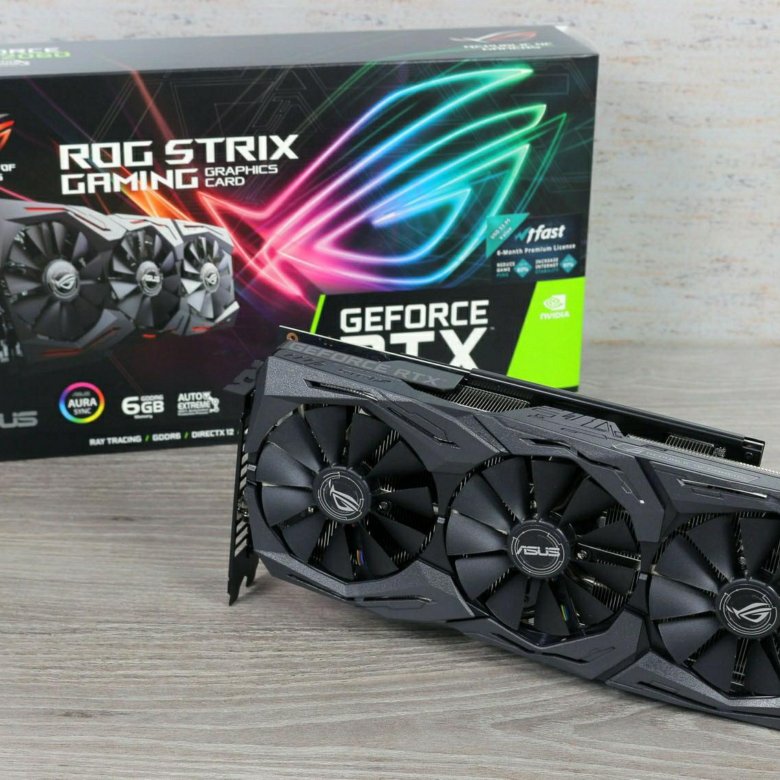 Firstly, there’s no DVI header, which is no big loss, with Asus instead opting for two DisplayPorts and two HDMI outputs instead of the usual three/one split. The reason is to allow HDMI-based VR headsets and HDMI displays to remain connected at the same time, saving a subset of users the headache of constantly switching. That seems reasonable, although Asus’ decision to drop the USB Type-C VirtualLink header is puzzling. Asus doesn’t seem to be alone in this decision, but this isn’t a card known for cutting back on features. Update 28/01/19: We quizzed Asus about this, and we were told that the decision to exclude USB Type-C was made ‘on suggestion from Nvidia’. This doesn’t really explain the reasoning, especially as Nvidia’s own Founders Edition does include it, but Asus certainly isn’t the only board partner to follow this ‘suggestion’. We remain just as puzzled, but we’ll leave it at that.
Firstly, there’s no DVI header, which is no big loss, with Asus instead opting for two DisplayPorts and two HDMI outputs instead of the usual three/one split. The reason is to allow HDMI-based VR headsets and HDMI displays to remain connected at the same time, saving a subset of users the headache of constantly switching. That seems reasonable, although Asus’ decision to drop the USB Type-C VirtualLink header is puzzling. Asus doesn’t seem to be alone in this decision, but this isn’t a card known for cutting back on features. Update 28/01/19: We quizzed Asus about this, and we were told that the decision to exclude USB Type-C was made ‘on suggestion from Nvidia’. This doesn’t really explain the reasoning, especially as Nvidia’s own Founders Edition does include it, but Asus certainly isn’t the only board partner to follow this ‘suggestion’. We remain just as puzzled, but we’ll leave it at that.
An eight-pin/six-pin PCIe power plug combination is overkill for the RTX 2060 GPU, but we wouldn’t expect anything less from Asus here. The plugs have little LED indicators to show users everything is working as it should, and the fact they’re indented means your cables shouldn’t add much more to the height of the card.
The plugs have little LED indicators to show users everything is working as it should, and the fact they’re indented means your cables shouldn’t add much more to the height of the card.
On the front side of the PCB are three headers. Two of them are four-pin PWM fan headers, which make up the feature known as FanConnect II. This allows you to connect up to two fans directly to the GPU and control their speed based on GPU temperature. The third header is an Aura RGB header to which you can connect four-pin RGB strips or accessories (non-addressable), thus bringing them into the Aura Sync ecosystem – see above for our reservations regarding that topic, though.
Asus is using its previous-generation GPU fans (Wing-Blade) here instead of the latest Axial-tech ones found on the Strix variants of the RTX 2080 Ti and RTX 2080. These fans come with an IP5X ingress rating against dust and as mentioned are semi-passive when using the default Q BIOS. Heat will largely be recycled back into your case, though, so ensure you have good exhaust airflow.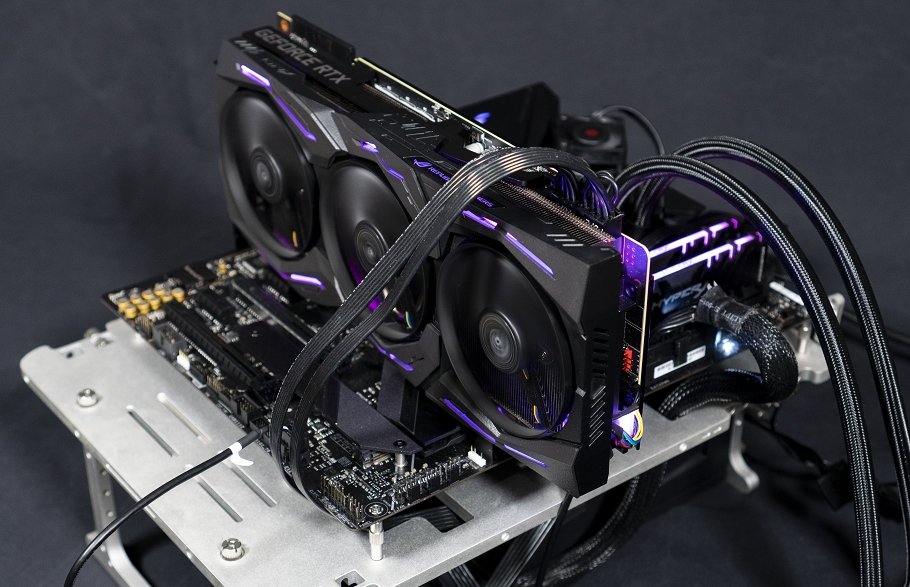
The metal of the bulky cooler fills the card’s considerable volume well, so space isn’t being wasted. Asus uses what it calls a MaxContact GPU plate, referring to it being apparently 10 times flatter than vague ‘traditional’ contact plates. Heat is then passed from this copper plate along six copper heat pipes and two separate aluminium fin stacks. Nickel plating ensures a consistent colour and shine to the cooler too, and VRMs are looked after by the heatsink as well thanks to a large thermal pad. Meanwhile, the GDDR6 memory is cooled by a separate metal frame that also bolsters the card’s rigidity.
Only six screws need be removed to take off the entire cooler, which is great if you need to perform maintenance or switch to water-cooling. The card benefits from Asus’ Auto-Extreme automated manufacturing process, which is also responsible for the clean and consistent look of the PCB.
Asus is using its full suite of Super Alloy Power II components for power phases, with eight of these serving the GPU and two serving the memory. That’s two more than the FE card for the GPU and the same number for the memory.
That’s two more than the FE card for the GPU and the same number for the memory.
- Graphics processor Nvidia GeForce RTX 2060, 1,365MHz (1,830MHz boost) (1,395MHz/1,860MHz in OC Mode)
- Pipeline 1,920 stream processors, 240 Tensor Cores, 30 RT Cores, 120 texture units, 48 ROPs
- Memory 6GB GDDR6, 14Gbps effective
- Bandwidth 336GB/sec, 192-bit interface
- Compatibility DirectX 12, Vulkan, OpenGL 4.5
- Outputs 2 x DisplayPort 1.4, 2 x HDMI 2.0b
- Power connections 1 x eight-pin PCIe, 1 x six-pin PCIe, top-mounted
- Size 300mm long, 132mm tall, 50mm tall (~2.5-slot)
- Warranty Two years
1 — Asus GeForce RTX 2060 ROG Strix OC Review2 — Test Setup3 — 3DMark and VRMark4 — Battlefield 15 — Deus Ex: Mankind Divided6 — Middle-Earth: Shadow of War7 — Total War: Warhammer II8 — Wolfenstein II: The New Colossus9 — World of Tanks Encore10 — Power and Thermals11 — Overclocking12 — Performance Analysis and Conclusion
is the flagship for the budget conscious GECID.
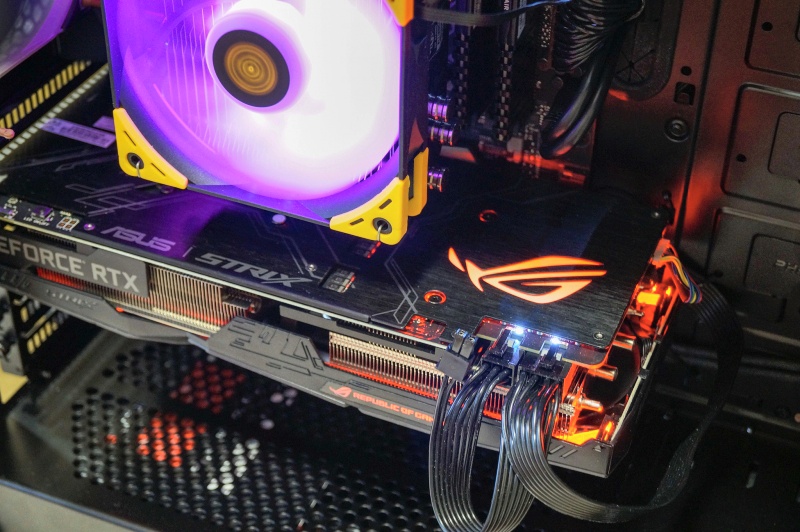 com. Page 1
com. Page 1
::>Video cards
>2019
> ASUS ROG-STRIX-RTX2060-6G-GAMING
12-08-2019
Page 1
Page 2
One page
There have been many changes in the graphics card market lately. AMD has marked the release of a new line of graphics accelerators Radeon RX 5700 and presumably stopped production of the Radeon VII. NVIDIA has responded to this with the GeForce RTX 20 SUPER series, which currently includes three graphics cards. NVIDIA GeForce RTX 2060 SUPER will exist in parallel with GeForce RTX 2060, and GeForce RTX 2070 SUPER and GeForce RTX 2080 SUPER will replace GeForce RTX 2070 and GeForce RTX 2080 respectively in the market. The release of the GeForce RTX 2080 Ti SUPER is not planned yet, and the position of the flagship remains unchanged.
While we are waiting for most of the new products to test, we decided to introduce you to the ASUS ROG STRIX GeForce RTX 2060 .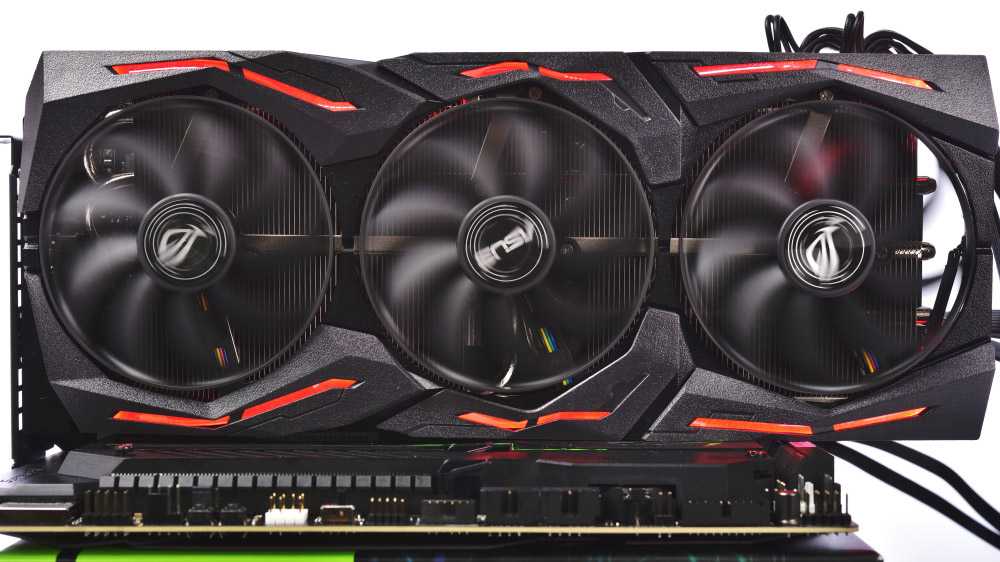 This is the youngest among the three flagship modifications of the NVIDIA GeForce RTX 2060 in the ASUS arsenal. Let’s first take a look at its technical characteristics.
This is the youngest among the three flagship modifications of the NVIDIA GeForce RTX 2060 in the ASUS arsenal. Let’s first take a look at its technical characteristics.
Specification
|
Model |
ASUS ROG STRIX GeForce RTX 2060 (ROG-STRIX-RTX2060-6G-GAMING) |
|
GPU |
NVIDIA TU106-200A |
|
Microarchitecture |
NVIDIA Turing |
|
Technical process, nm |
12 |
|
Number of CUDA cores |
1920 |
|
Number of texture units |
120 |
|
Number of raster blocks |
48 |
|
Number of tensor cores |
240 |
|
Number of cores RT |
30 |
|
Rated / dynamic frequency of the graphics core, MHz |
1365 / 1650 («Silent») 1365 / 1680 («Gaming») 1395 / 1710 («OC») |
|
Effective memory frequency, MHz |
14000 |
|
Memory size, GB |
6 |
|
Memory type |
GDDR6 |
|
Memory bus width, bit |
192 |
|
Memory bandwidth, GB/s |
336 |
|
Tire type |
PCI Express 3. |
|
External interfaces |
2 x HDMI 2.0b |
|
Minimum power supply unit, W |
500 |
|
Additional PCIe 9 power connectors0003 |
1 x 8-pin 1 x 6-pin |
|
Dimensions from the official website (according to measurements in our test laboratory), mm |
300 x 132 x 50 (313 x 131 x 51) |
|
Drivers |
Latest drivers can be downloaded from the ASUS website or the GPU manufacturer’s website |
|
Manufacturer website |
ASUS |
Packing and contents
The ASUS ROG-STRIX-RTX2060-6G-GAMING video card comes in a large cardboard box with excellent content and traditional design. Separately, we highlight the availability of a free 6-month premium subscription to the WTFast Gamers Private Network service. It automatically optimizes the path of game packets between the user’s computer and the game server to minimize their loss and reduce the average response time (ping).
Separately, we highlight the availability of a free 6-month premium subscription to the WTFast Gamers Private Network service. It automatically optimizes the path of game packets between the user’s computer and the game server to minimize their loss and reduce the average response time (ping).
The list of system requirements for the computer is located on one of the sides of the box. Based on the recommendations, the power supply should be at least 500W and support two PCIe cables (1 x 6-pin and 1 x 8-pin).
In the kit we found the standard documentation, software CD and a pair of cable ties.
Appearance
The design of the video card casing is quite strict, like the whole design. Thanks to this style, the video card will fit perfectly into any system. Among the interesting features ASUS ROG-STRIX-RTX2060-6G-GAMING highlight the use of a fully automatic production process ASUS AUTO-EXTREME Technology and a reliable element base Super Alloy Power II.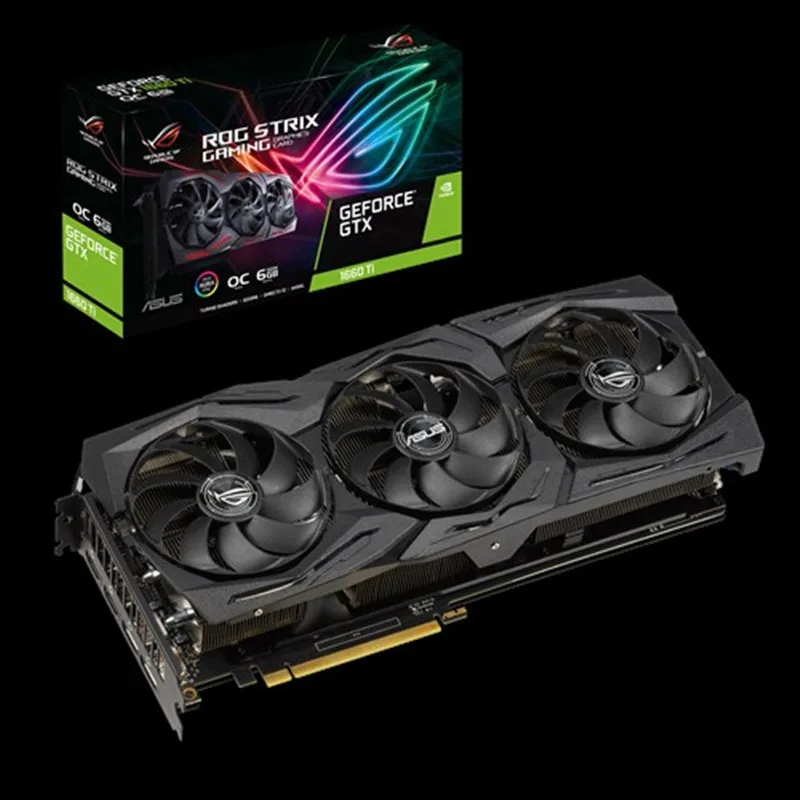 It includes solid-state and tantalum-polymer capacitors, as well as chokes with a ferrite core.
It includes solid-state and tantalum-polymer capacitors, as well as chokes with a ferrite core.
If you are a fan of LED-backlighting, then the tested model will definitely please you, because it has ASUS’ proprietary Aura Sync system. You can easily synchronize its work with the glow of other compatible components of your PC.
To access to turn the backlight on and off, it is not necessary to run proprietary software every time — there is a button on the printed circuit board for this, which is located next to the contacts for measuring voltage. Nearby is a switch between the profiles of the cooling system — Performance and Quiet. The first is characterized by greater performance, and the second — by less noise.
The graphics card is powered by a PCI Express 3.0 x16 slot and two PCIe connectors (6-pin and 8-pin). Thanks to their good location, the cooler does not make it difficult to disconnect the PCIe cable. Recall that the version of Founders Edition costs one 8-pin connector.
In the tail section there is a connector for backlight synchronization and a pair of fan headers, the speed control of which, if desired, can be entrusted to the video card thanks to ASUS FanConnect II technology.
The back of the ASUS ROG STRIX GeForce RTX 2060 is protected by a metal base plate that increases the rigidity of the structure. One of the fixing screws of the cooling system is covered with a warranty sticker, so you will not be able to remove the radiator without voiding the warranty. By the way, we were not allowed to disassemble the video card, so there will be no detailed description of the cooling system and element base this time.
A modified set of interfaces is used to display the image:
- 2 x HDMI 2.0b;
- 2 x DisplayPort 1.4.
Recall that NVIDIA recommends using one USB Type-C, HDMI, DisplayPort, and DVI ports. The maximum resolution is 7680 x 4320.
The video accelerator is based on the 12nm GPU NVIDIA TU106-200A. Testing was carried out in the «Gaming» mode, which is used by default. In it, the base frequency of the GPU is at the level of 1365 MHz, and the dynamic one rises to 1680 MHz, which corresponds to the reference formula.
Testing was carried out in the «Gaming» mode, which is used by default. In it, the base frequency of the GPU is at the level of 1365 MHz, and the dynamic one rises to 1680 MHz, which corresponds to the reference formula.
The video memory is made up of Micron GDDR6 chips with a total capacity of 6 GB. They operate at a reference effective frequency of 14000 MHz. Data exchange between the graphics core and memory is carried out through a 192-bit bus, which is capable of passing 336 GB of information per second.
If desired, two more profiles can be activated in the proprietary GPU Tweak II utility: “Silent” and “OC”. In the first, the dynamic frequency of the GPU is reduced to 1650 MHz, and in the second it is raised to 1710 MHz. That is, a small factory overclocking is still present in this video card.
Cooling System
ASUS ROG STRIX GeForce RTX 2060 with cooling system installed takes up almost three expansion slots and has a total length of 300mm according to the official website (313mm according to our test lab measurements).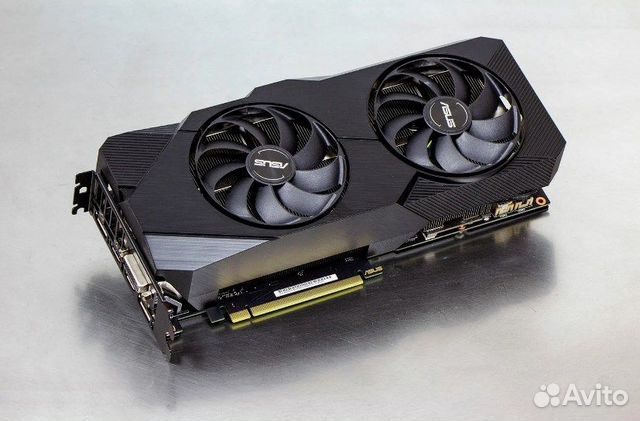
The cooler consists of a two-section aluminum radiator, six nickel-plated copper heat pipes with a diameter of 6 mm and three axial fans with a blade diameter of 88 mm, mounted on a plastic casing.
Not without useful technologies. MaxContact improves the heatsink base processing to increase the contact area with the GPU. And the wing-blade design increases airflow and improves heat dissipation from the heatsink.
We used Q mode for testing. With automatic regulation of the speed of rotation of the fan blades, in the maximum load mode, the graphics core heated up to 61°C with a critical value of 88°C. The propellers were running at 1269- 1272 rpm (38% / 58% of the maximum). According to subjective sensations, the noise was at an average level.
For comparison, let’s take the ASUS Dual GeForce RTX 2060 Advanced edition video card with more compact dimensions and a simplified cooling system. In a similar mode, her GPU heated up to 62 ° C, but worked at a higher frequency: 1710 versus 1680 MHz.
In the maximum fan speed mode (1767 / 3299 rpm), the temperature of the GPU dropped to 49°C. The noise exceeded the average level and became uncomfortable for continuous use. The opponent’s cooler in a similar mode cooled the GPU to 44°C.
In the absence of load, the frequencies of the graphics core and memory were automatically reduced, allowing to reduce power consumption and heat dissipation of the video accelerator as a whole. In this mode, the GPU temperature did not exceed 42°C. The cooling system operates in a completely passive mode, and the fans start to rotate only after the GPU temperature reaches 56°C.
In general, the cooling system of the ASUS ROG STRIX GeForce RTX 2060 model proved to be very worthy — in automatic mode, you can not worry about overheating of the components or the noise level. And if you do not like the efficiency, then you can switch to P mode. There were no extraneous sounds in the form of a high-frequency squeak of chokes during the testing process.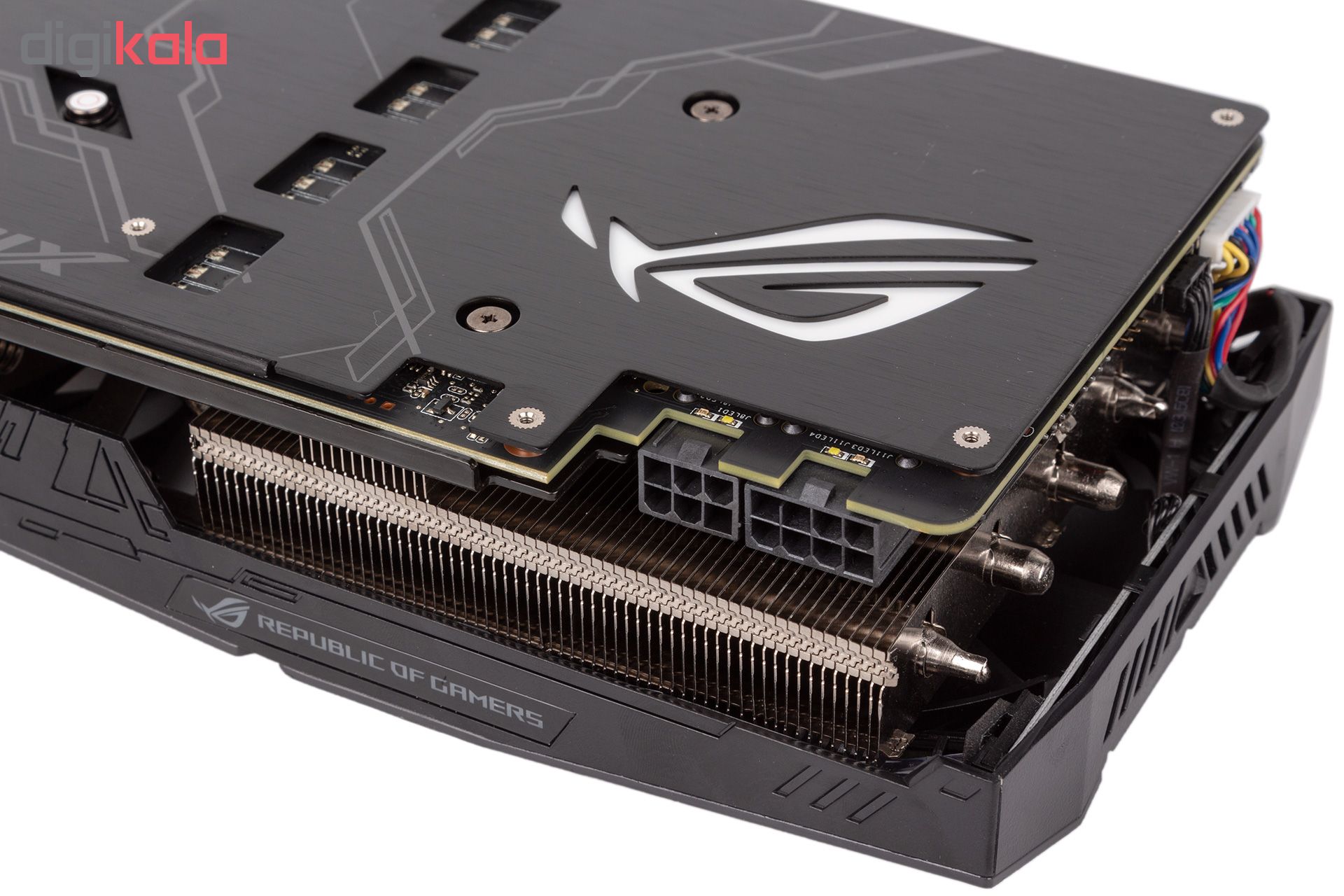
two steps up GECID.com. Page 1
::>Video cards
>2019
> ASUS ROG-STRIX-RTX2060-O6G-GAMING
21-02-2019
Page 1
Page 2
One page
As part of the CES 2019 exhibition, the NVIDIA GeForce RTX 2060 video card was announced, which should replace not only the NVIDIA GeForce GTX 1060, but also oust the NVIDIA GeForce GTX 1070. Let’s figure out if the game is worth the candle, and in which cases the purchase of NVIDIA GeForce RTX 2060 will be justified and expedient.
The recommended price of the novelty in the USA is $349 excluding taxes, but it is clearly not worth counting on such a price tag in our market. For example, at the time of writing the review, buying the most affordable version of the NVIDIA GeForce RTX 2060 will cost you about $420. Prices for modifications from more famous manufacturers confidently crossed the $500 mark.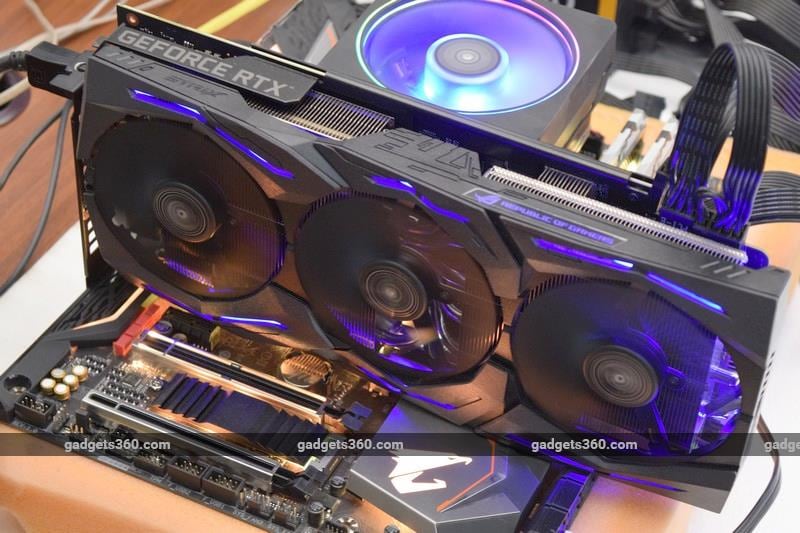
The novelty is based on the NVIDIA TU106-200 GPU based on the 12nm NVIDIA Turing microarchitecture. It includes 1920 CUDA cores, 120 texture units, 48 rasterization units, 30 RT cores and 240 tensor cores. The video memory subsystem is made up of 6 GB GDDR6 chips with a 192-bit bus, an effective frequency of 14,000 MHz, and a bandwidth of 336 GB/s.
The final comparison table of the characteristics of NVIDIA GeForce RTX 20 graphics cards is as follows:
|
Model |
NVIDIA GeForce RTX 206 0 |
NVIDIA GeForce RTX 2070 |
NVIDIA GeForce RTX 2080 |
NVIDIA GeForce RTX 2080 Ti |
|
Technical process, nm |
12 (FFN) |
12 (FFN) |
12 (FFN) |
12 (FFN) |
|
GPU |
NVIDIA TU106-200A |
NVIDIA TU106-400A |
NVIDIA TU104-400A |
NVIDIA TU102-300A |
|
Microarchitecture |
NVIDIA Turing |
|||
|
Crystal area, mm 2 |
445 |
445 |
545 |
754 |
|
Number of transistors, billion |
10. |
10.8 |
13.6 |
18.6 |
|
Number of CUDA cores |
1920 |
2304 |
2944 |
4352 |
|
Number of texture units |
120 |
144 |
184 |
272 |
|
Number of raster blocks |
48 |
64 |
64 |
88 |
|
Number of Tensor Cores |
240 |
288 |
368 |
544 |
|
Number of cores RT |
30 |
36 |
46 |
68 |
|
GPU base / dynamic frequency, MHz |
1365 / 1680 |
1410 / 1620 |
1515 / 1710 |
1350 / 1545 |
|
Video memory type |
GDDR6 |
GDDR6 |
GDDR6 |
GDDR6 |
|
Volume, GB |
6 |
8 |
8 |
11 |
|
Effective memory frequency, MHz |
14000 |
14000 |
14000 |
14000 |
|
Bus width, bit |
192 |
256 |
256 |
352 |
|
Bandwidth, GB/s |
336 |
448 |
448 |
616 |
|
Recommended cost for partner versions, $ |
349 |
499 |
699 |
999 |
You can read more about the NVIDIA Turing microarchitecture, tensor and RT cores, as well as other features of the new line in our review of the NVIDIA GeForce RTX 2080. Well, we will move on to a practical acquaintance with the NVIDIA GeForce RTX 2060 using the modification as an example from ASUS.
Well, we will move on to a practical acquaintance with the NVIDIA GeForce RTX 2060 using the modification as an example from ASUS.
The flagship version ASUS ROG STRIX GeForce RTX 2060 OC Edition became the first sign in our testing. First, let’s take a look at its characteristics.
Specification
|
Model |
ASUS ROG STRIX GeForce RTX 2060 OC Edition (ROG-STRIX-RTX2060-O6G-GAMING) |
|
|
GPU |
NVIDIA TU106-200A |
|
|
Microarchitecture |
NVIDIA Turing |
|
|
Technical process, nm |
12 |
|
|
Number of CUDA cores |
1920 |
|
|
Number of texture units |
120 |
|
|
Number of raster blocks |
48 |
|
|
Number of tensor cores |
240 |
|
|
Number of cores RT |
30 |
|
|
Rated / dynamic GPU frequency, MHz |
Gaming mode |
1365 / 1830 |
|
«OC» mode |
1395 / 1860 |
|
|
Effective memory frequency, MHz |
14000 |
|
|
Memory size, GB |
6 |
|
|
Memory type |
GDDR6 |
|
|
Memory bus width, bit |
192 |
|
|
Memory bandwidth, GB/s |
336 |
|
|
Tire type |
PCI Express 3. |
|
|
Image output interfaces |
2 x HDMI 2.0b |
|
|
Minimum power supply unit, W |
500 |
|
|
Optional PCIe power connector |
1 x 6-pin 1 x 8-pin |
|
|
Dimensions from the official website (according to measurements in our test laboratory), mm |
300 x 132 x 50 (313 x 130 x 50) |
|
|
Drivers |
Latest drivers can be downloaded from the ASUS website or the GPU manufacturer’s website |
|
|
Manufacturer website |
ASUS |
|
Packaging and contents
ASUS ROG STRIX GeForce RTX 2060 OC Edition comes in a cardboard box with excellent content and traditional ROG STRIX design..gif) Separately, we highlight the availability of a free 6-month premium subscription to the WTFast Gamers Private Network service. It automatically optimizes the path of game packets between the user’s computer and the game server to minimize their loss and reduce the average response time (ping).
Separately, we highlight the availability of a free 6-month premium subscription to the WTFast Gamers Private Network service. It automatically optimizes the path of game packets between the user’s computer and the game server to minimize their loss and reduce the average response time (ping).
The list of system requirements for the computer in which this graphics adapter is planned to be installed is located on one of the sides of the box. Based on the recommendations, the power supply should be at least 500W and support two PCIe connectors (1 x 6-pin and 1 x 8-pin).
In the kit we found the standard documentation, software CD and a pair of cable ties.
A modified set of interfaces is used to display the image:
- 2 x HDMI 2.0b;
- 2 x DisplayPort 1.4.
Recall that the Founders Edition version uses one USB Type-C port, HDMI, DisplayPort and DVI.
Appearance
All ASUS ROG STRIX video cards use the same design, so you can find out the exact model by looking at the packaging or marking sticker on the back of the adapter. By tradition, we are greeted by a plastic casing with three coolers, which we have already studied in great detail using other cards of this line. In general, the novelty looks stylish, strict and restrained, and looks no different from the flagships.
By tradition, we are greeted by a plastic casing with three coolers, which we have already studied in great detail using other cards of this line. In general, the novelty looks stylish, strict and restrained, and looks no different from the flagships.
Of course, the ASUS Aura Sync lighting system has not gone away either. It allows you to diversify the appearance of the video card and synchronize the illumination mode with other compatible components.
You can turn the backlight on or off not only in the software, but also with the corresponding button on the printed circuit board. It is located next to the contacts for measuring the voltage and the switch between the two profiles of the cooling system. «Perfomance» (P Mode) switches the fans to maximum performance, while «Quiet» (Q Mode) is designed to reduce noise levels by reducing the speed of the blades.
The tested graphics adapter is powered by a PCI Express 3.0 x16 slot and two PCIe connectors (6-pin and 8-pin). Thanks to their good location, the cooler does not make it difficult to disconnect the PCIe cables. Recall that the version of the Founders Edition costs one 8-pin connector.
Thanks to their good location, the cooler does not make it difficult to disconnect the PCIe cables. Recall that the version of the Founders Edition costs one 8-pin connector.
Looking at the video card from the end, you can see a connector for backlight synchronization and a couple of blocks for connecting fans. The speed of rotation of their blades can be entrusted to the graphics card thanks to ASUS FanConnect II technology.
The reverse side of the PCB is protected by a metal backing plate which increases the rigidity of the structure. And one of the fixing screws of the cooling system is covered with a warranty sticker, so you won’t be able to remove the radiator without losing the warranty.
The video accelerator is based on the NVIDIA TU106-200A GPU, which is manufactured using a 12nm process technology. Testing was carried out in the “Gaming” mode, in which the base frequency of the GPU is at the level of 1365 MHz, and the dynamic one is 1830 MHz.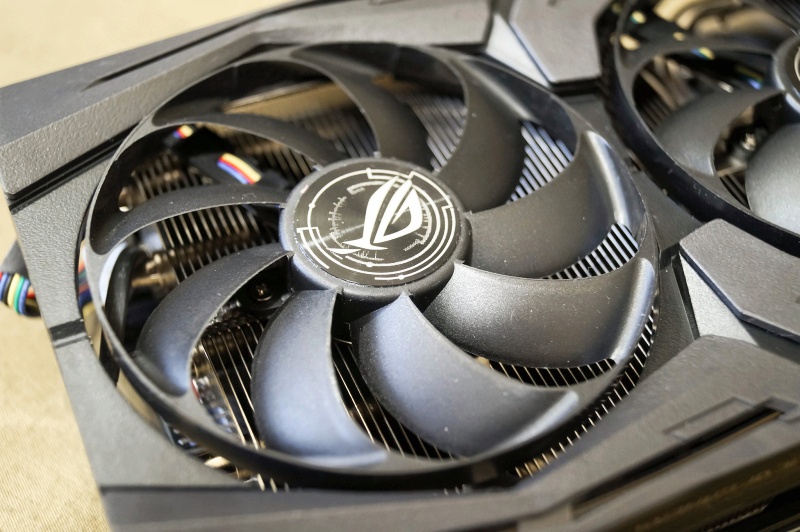
As for the video memory, the card is equipped with 6 GB GDDR6 from Micron, running at a reference effective clock speed of 14000 MHz. Data exchange between the graphics core and memory is carried out through a 192-bit bus, which is capable of passing 336 GB of information per second.
If desired, two more profiles can be activated in the proprietary GPU Tweak II utility: “Silent” and “OC”. In the first, the dynamic frequency of the GPU is reduced to 1800 MHz, and in the second it is raised to 1860 MHz. In turn, the parameters achieved during manual overclocking can be saved to a user profile for quick activation of overclocking in the future.
Cooling system
The ASUS ROG-STRIX-RTX2060-O6G-GAMING video card with installed cooling system occupies two expansion slots and has a total length of 300 mm according to the official website.
The cooler consists of a two-section aluminum radiator, six nickel-plated copper heat pipes with a diameter of 6 mm and three axial fans with a blade diameter of 88 mm, mounted on a plastic casing. Through the thermal pad, the main radiator contacts the elements of the power subsystem. It uses an 8+2-phase design instead of the 6+2-phase design in the Founders Edition reference version, Super Alloy Power II element base, and ASUS Auto-Extreme Technology assembly process.
Through the thermal pad, the main radiator contacts the elements of the power subsystem. It uses an 8+2-phase design instead of the 6+2-phase design in the Founders Edition reference version, Super Alloy Power II element base, and ASUS Auto-Extreme Technology assembly process.
Among other interesting details, we note the MaxContact technology, which implies improved processing of the heatsink base to increase the contact area with the GPU. As well as the shape of the blades Wing-blade, which increases the static pressure and improves the efficiency of heat dissipation.
When automatically adjusting the speed of rotation of the fan blades, in the maximum load mode, the graphics core heated up to 65°C with a critical value of 88°C. The propellers worked at a speed of 1431 rpm. According to subjective sensations, the noise was very low and did not interfere with work at all.
In the maximum fan speed mode (3289 rpm), the GPU temperature dropped to 52°C.

 0 x16
0 x16 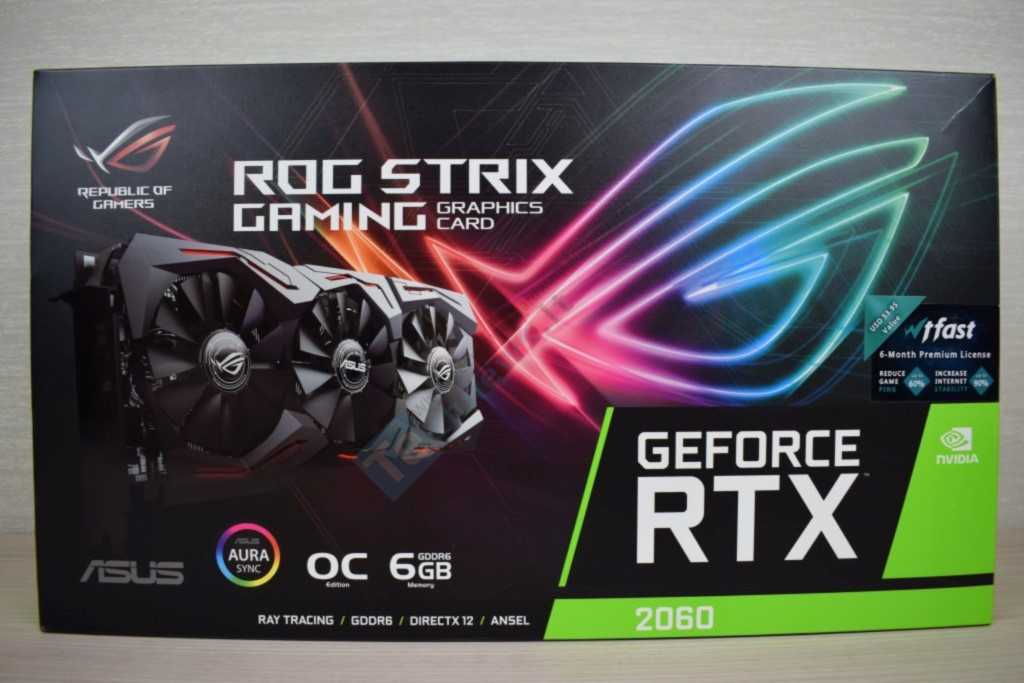 8
8  0 x16
0 x16